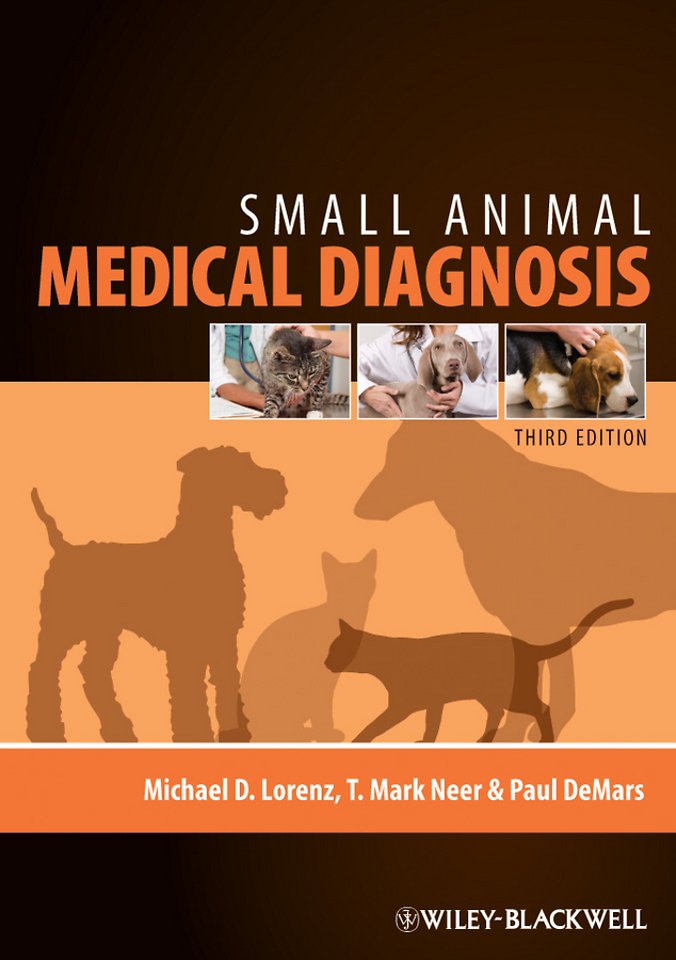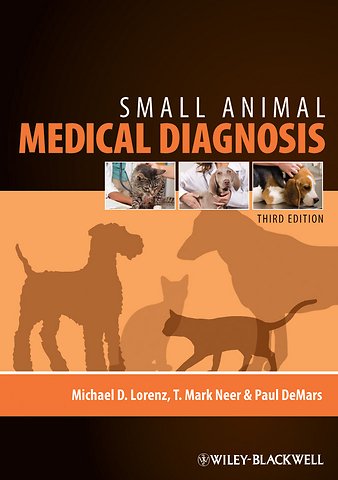Small Animal Medical Diagnosis 3e
Samenvatting
Small Animal Medical Diagnosis, Third Edition takes a problem–oriented approach to clinical diagnosis and outlines core information necessary to effectively evaluate the major medical problems in dogs and cats. The text starts by defining problems caused by disease and proceeds to integrate the history, physical examination, and diagnostic modalities into a logical approach designed to assist with the medical management of patients. The new edition continues to serve as a vital tool in accurate and appropriate diagnosis for small animal veterinarians, emergency and critical care veterinarians, and veterinary students.
Specificaties
Inhoudsopgave
<p>Preface.</p>
<p>1. The Problem–Oriented Approach (Michael D. Lorenz).</p>
<p>PART ONE: General (Polysystemic) Problems.</p>
<p>2. Pyrexia (Fever) (Emily L. Medici and Michael D. Lorenz).</p>
<p>3. Disturbances of Food Intake: Anorexia And Polyphagia (Michael D. Lorenz and Paul L. DeMars).</p>
<p>4. Episodic Weakness (Michael D. Lorenz).</p>
<p>5. Polyuria and Polydipsia (Justin D. Thomason and John P. Hoover).</p>
<p>PART TWO: Behavioral Problems.</p>
<p>6. Aggression (Paul L. DeMars).</p>
<p>7. Fear, Anxiety, and Compulsive Behavior (Paul L. DeMars).</p>
<p>PART THREE: Conformational Problems.</p>
<p>8. Ascites, Peripheral Edema, and Abdominal Distention (T. Mark Neer).</p>
<p>9. Retarded Growth (Michael D. Lorenz).</p>
<p>10. Changes in Body Weight: Weight Loss and Obesity (Paul L. DeMars).</p>
<p>PART FOUR: Dermatologic Problems.</p>
<p>11. Pruritus (Michael D. Lorenz).</p>
<p>12. Primary and Secondary Skin Lesions (Michael D. Lorenz).</p>
<p>13. Alopecia (Michael D. Lorenz).</p>
<p>14. Disorders of Pigmentation (Michael D. Lorenz).</p>
<p>PART FIVE: Hematolymphatic Problems.</p>
<p>15. Bleeding Disorders (James H. Meinkoth and Michael D. Lorenz).</p>
<p>16. Lymphadenopathy (Michael D. Lorenz).</p>
<p>PART SIX: Cardiovascular Problems.</p>
<p>17. Disturbances of Heart Rate, Rhythm, and Pulse (Nicole Ponzio).</p>
<p>18. Murmurs and Abnormal Heart Sounds (Nicole Ponzio).</p>
<p>19. Abnormal Mucous Membranes (Jennifer L. Peters).</p>
<p>PART SEVEN: Respiratory Problems.</p>
<p>20. Coughing and Hemoptysis (Justin D. Thomason and John P. Hoover).</p>
<p>21. Respiratory Distress and Cyanosis (Justin D. Thomason and John P. Hoover).</p>
<p>22. Syncope (Justin D. Thomason and John P. Hoover).</p>
<p>23. Abnormal Lung Sounds (Justin D. Thomason and John P. Hoover).</p>
<p>24. Sneezing and Nasal Discharge (Jennifer L. Peters).</p>
<p>PART EIGHT: Digestive Problems.</p>
<p>25. Ptyalism (Jill D. Brunker).</p>
<p>26. Dysphagia (Jill D. Brunker).</p>
<p>27. Regurgitation and Vomiting (Jill D. Brunker).</p>
<p>28. Diarrhea (Jill D. Brunker).</p>
<p>29. Constipation and Flatulence (Michael D. Lorenz).</p>
<p>30. Abdominal Pain (Kristy Broaddus).</p>
<p>31. Icterus (T. Mark Neer).</p>
<p>PART NINE: Urologic Problems.</p>
<p>32. Abnormal Micturition: Dysuria, Pollakiuria, and Stranguria (Paul L. DeMars).</p>
<p>33. Discolored Urine (Mary H. Bowles and Michael D. Lorenz).</p>
<p>34. Urinary Incontinence (Mary H. Bowles).</p>
<p>PART TEN: Reproductive Problems.</p>
<p>35. Vaginal and Preputial Discharge (Charles C. Broaddus and G. Reed Holyoak).</p>
<p>36. Abnormalities of the External Genitalia (Chris Schreiber and Gregor L. Morgan).</p>
<p>37. Abortion, Abnormal Estrous Cycle, and Infertility (G. Reed Holyoak, Chelsea Makloski, and Gregor L. Morgan).</p>
<p>PART ELEVEN: Musculoskeletal Problems.</p>
<p>38. Lameness (T. Mark Neer).</p>
<p>39. Bone, Joint, and Periskeletal Swelling (Jude Bordelon).</p>
<p>40. Nociception ("Pain") (Michael D. Lorenz and Marjorie E. Gross).</p>
<p>PART TWELVE: Neurologic Problems.</p>
<p>41. Paresis or Paralysis (T. Mark Neer).</p>
<p>42. Ataxia (T. Mark Neer).</p>
<p>43. Head Tilt (T. Mark Neer).</p>
<p>44. Collapse (Seizures, Syncope, Cataplexy, and Narcolepsy) (T. Mark Neer).</p>
<p>45. Stupor and Coma (T. Mark Neer).</p>
<p>PART THIRTEEN: Special Sensation Problems.</p>
<p>46. Blindness (Michael D. Lorenz and Margi A. Gilmour).</p>
<p>47. Anisocoria (Margi A. Gilmour).</p>
<p>48. Nystagmus and Strabismus (Michael D. Lorenz).</p>
<p>49. Loss of Corneal Transparency (Margi A. Gilmour).</p>
<p>50. Abnormal Anterior Chamber (Margi A. Gilmour).</p>
<p>51. Abnormal Lens (Margi A. Gilmour).</p>
<p>52. Anosmia Loss of Olfaction (Michael D. Lorenz).</p>
<p>53. Deafness (Michael D. Lorenz).</p>
<p>PART FOURTEEN: Laboratory–Defined Problems.</p>
<p>54. Hematologic Problems (Robin W. Allison).</p>
<p>55. Abnormalities of the Standard Biochemical Profile (Robin W. Allison, James H. Meinkoth, and Theresa E. Rizzi).</p>
<p>56. Problems Identified on Urinalysis (James H. Meinkoth).</p>
<p>57. Abnormal Blood pH, Anion Gap, and Blood Gases (Theresa E. Rizzi).</p>
<p>Index.</p>

